The Colorado 5 Air is a premium five-person family tent that uses air beams rather than traditional poles to achieve its structural integrity. It’s manufactured by camping equipment stalwarts Outwell, a Danish brand that make pretty much everything you could possibly need for family camping trips, from vehicle awnings to cool boxes.
The brand describes the Colorado 5 Air as a “straightforward” option – well, at least they’re clearly not prone to hyperbole, as this is a cracking tent.
Being an inflatable tent, one of its main selling points is its ability to spring to life in no time at all – though its large size means it takes a little longer than some competitors.
So, you can have the whole thing alive and kicking in the time it takes your better half to take the kids for a quick celebratory ice cream (healthier camping snacks are available).
When it comes to liveability there’s a decent porch, complete with poled awning, a spacious living room with electrical hookup potential and two darkened bedrooms that can be customised to create one larger sleeping space.
The RRP is £944.99, but it’s easy to find it cheaper than this, so it’s decent value when compared to other inflatable tents – you get a great deal of tent for your money, but it’s not necessarily a budget option.
Pros
- Innovative magnetic bedroom opening
- Customisable bedrooms
- Premium feel and design touches
Cons
- Stuff sack isn’t the best
- Rudimentary design of the peg and pole bags
- Heavier and larger pack than most
| RRP: | £944.99 |
| Internal dimensions: | 545 x 320cm |
| Internal peak height: | 195cm |
| Packed size: | 78 x 40 x 45cm |
| Weight: | 26.6kg / 4st 2.6lbs |
Shape, structure and pitching
The Colorado 5 Air is a classic, large tunnel tent, featuring four air beams and one poled arch for the entrance awning. This creates a high and spacious family shelter, with two bedrooms, a porch and a living room that most adults will be able to stand up in comfortably.
The main ceiling height is 195cm at its apex and 185cm at the sides so, while Michael Jordan equivalents would have to stoop a little, most will be fine. From front to rear, the tent is 630cm long and 320cm wide, making it a very decent size for a modest quintet of human beings.
Pitching is a doddle, especially given its size, though it does take a little longer than some family air tents. All I had to do was roll the tent out, peg out the four corners and get to work on the air beams.
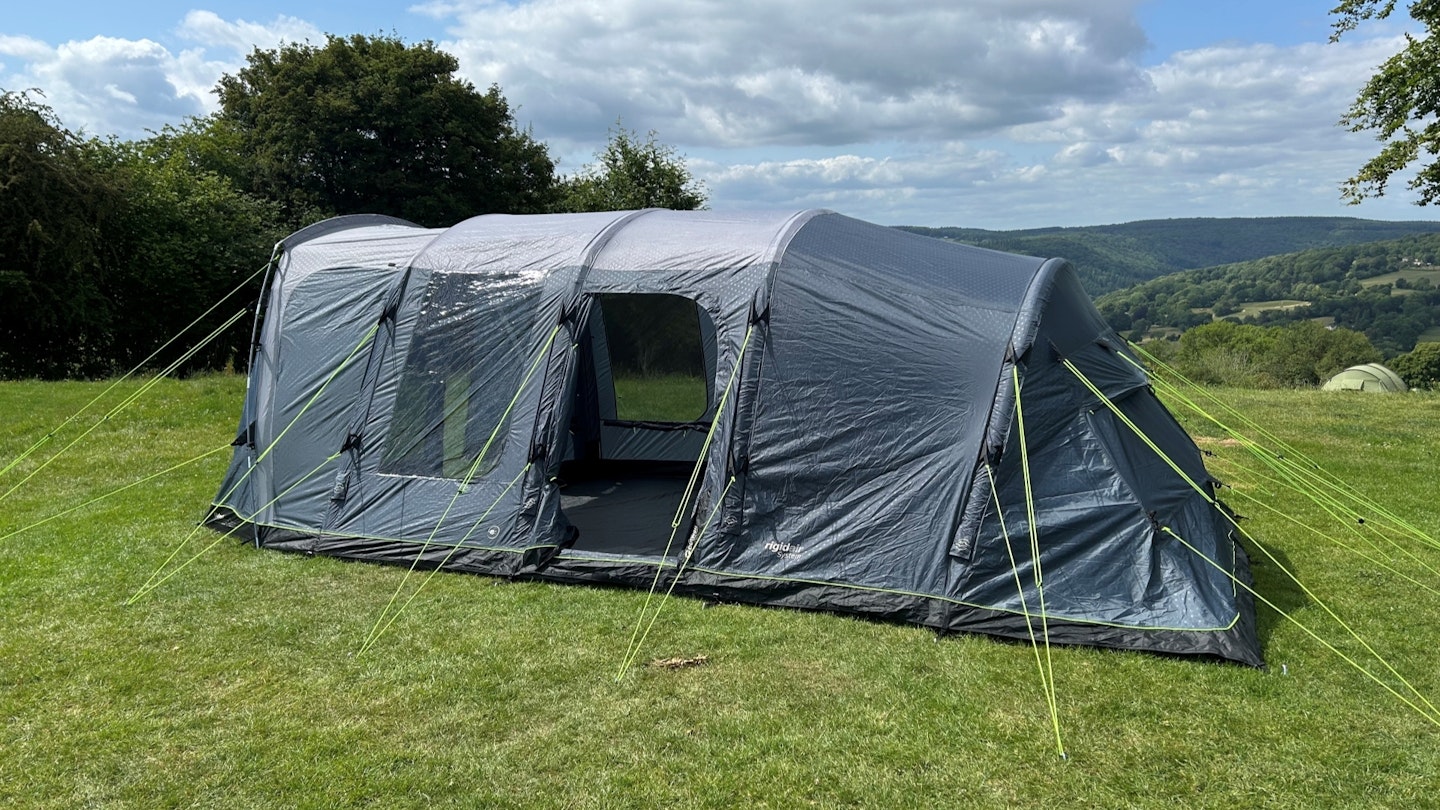
It comes with a pump (not always the case with air tents!), which slots satisfyingly into the excellent air valves. The pump is designed to be compact – its fold-out foot platforms make it as packable as possible.
There’s ingenuity in the two-way air valve on the beams, which features a spring-loaded mechanism that lets air out when pressed in but only allows air in when the spring is fully extended. It’s the same valve design as seen in the like of the Berghaus Air 400 and the Hi Gear Lavvu Airlite.
Inflating the beams to between the ideal 7-9PSI is quick and easy, while watching them magically spring into shape put me in mind of the childlike excitement of seeing a bouncy castle wobble into existence.

Once the beams were inflated and the single pole was threaded into the awning, I’d created what Outwell calls a “ready to move in” space. My daughter certainly wasn’t hanging around before leaping in with glee.
Outwell states that it can be “habitable” in nine minutes and fully pitched in 20, though I reckon you’d have to be on fast-forward to achieve this – it takes me around double these times.
After this, it’s just a case of closing the doors, before pegging out the rest of the tent and the guy lines. Packing the tent away is straightforward in some ways and arduous in others.
Deflating the air beams is easier than inflating them, with a simple press of the two-way valve allowing the air to rush out. However, folding this sizeable shelter away and stuffing it back into its sack is more laborious than it could be – though perhaps I’ll master it with practice.

The tube-shaped stuff sack is plenty large enough to accommodate the tent once it’s been rolled up. However, I would have preferred a sack with a top or side opening – basically anything that runs along the length of the sack – to enable me to drop the rolls of the tent into place and then work the sack around it.
Here, there’s a drawcord opening at the head of the tube, which makes working the rolls into the sack a bit of a battle, especially considering it weighs 26.6kg.
Internal liveability

So what’s the Colorado 5 Air like on the inside? Well, the main living room is large, airy and straightforward, with a sizable alternative entrance on one side. It’s a bright space on a sunny day: the large main entrance door is flanked by tinted window panels, while there are windows on either wall, too.
These can be covered as necessary with fabric panels that conveniently fold away when not in use. Electrical hookup has been considered, with a discreet zippered opening.
The bedroom area isn’t simply split in two, there’s very much a master bedroom and a kids’ bedroom. The master room measures 180 x 220cm, large enough for three sleeping side-by-side or two on a large double mattress with space to spare. The smaller room is still large enough for two adults at a squeeze, measuring 120 x 220cm.
The divide between the two rooms can be removed, too, should you wish to create an even more kingly bedroom space. There are little gear compartments on the side for keeping items off the groundsheet.
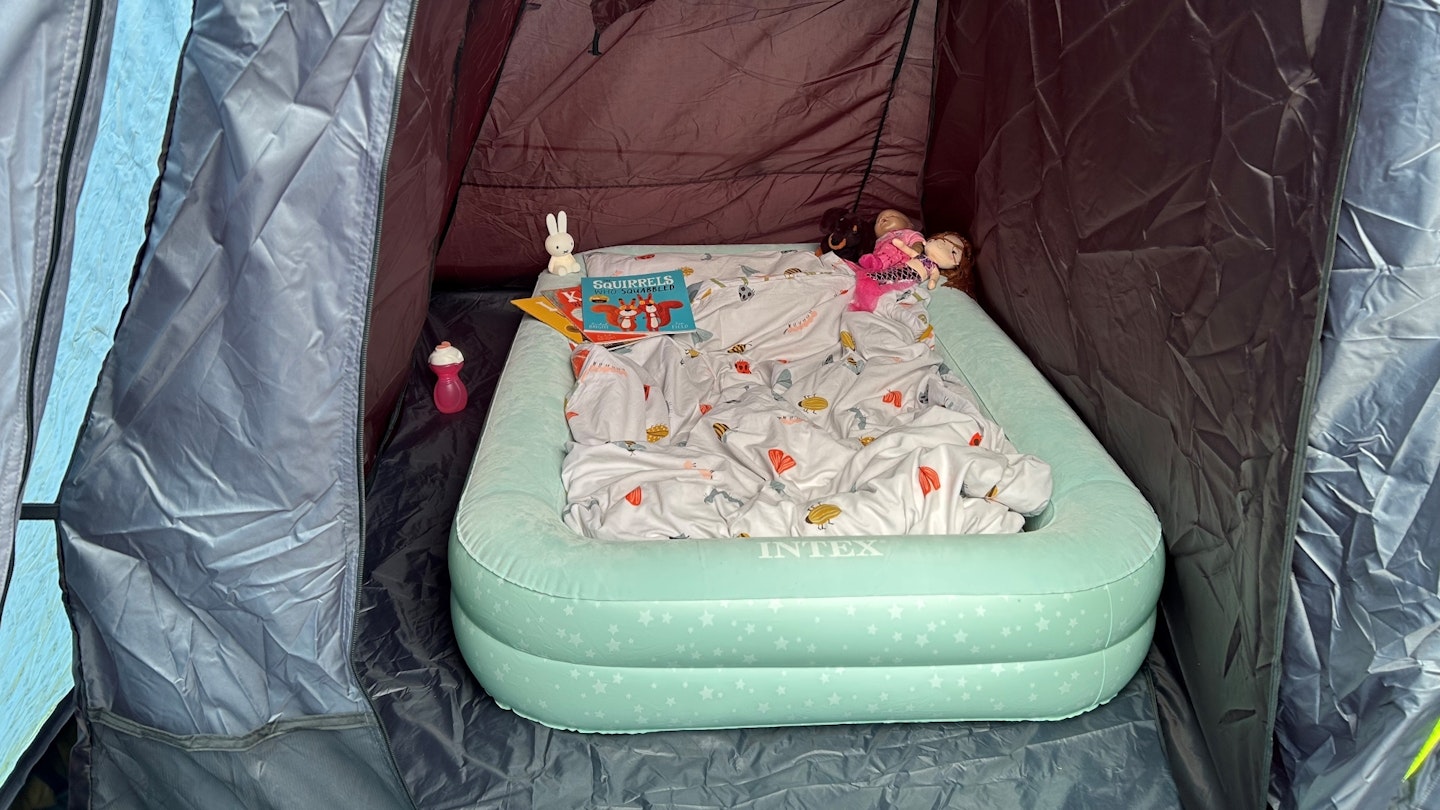
Both bedrooms have their own zippered openings but – and this is where Outwell have pulled the proverbial rabbit out of the hat – there’s also a central opening that opens and closes thanks to an array of magnets within the seams.
This allows for silent entry and exit, ideal when nature calls in the middle of the night and you need to sneak out like an absolute ninja. It’s a superb touch and one that’s also present in Hi Gear’s Lavvu Airlite.
My main qualm with the bedrooms was the lack of lantern hanging loops. They’re also perhaps not quite as dark or as cool as some blackout bedrooms I’ve tested, such as those in Decathlon’s Quechua 4-Man Inflatable Blackout Tent.
Waterproofing
The flysheet and inner are both crafted from polyester – in the case of the fly, it’s a hard-wearing and fire-retardant fabric. Meanwhile, the robust groundsheet is made from a double-coated waterproof polyethylene for maximum protection from the ground beneath.
When it comes to waterproofing, the flysheet boasts an impressive 4,000mm hydrostatic head (HH) rating. This is a measure of how much water pressure a fabric can take before water starts to seep in.
A rating of 4,000mm is relatively high, indicating a tent that should be able to cope with the sort of sustained rainfall you can half expect when attempting some of the best walks in the Lake District or the best walks in Snowdonia.
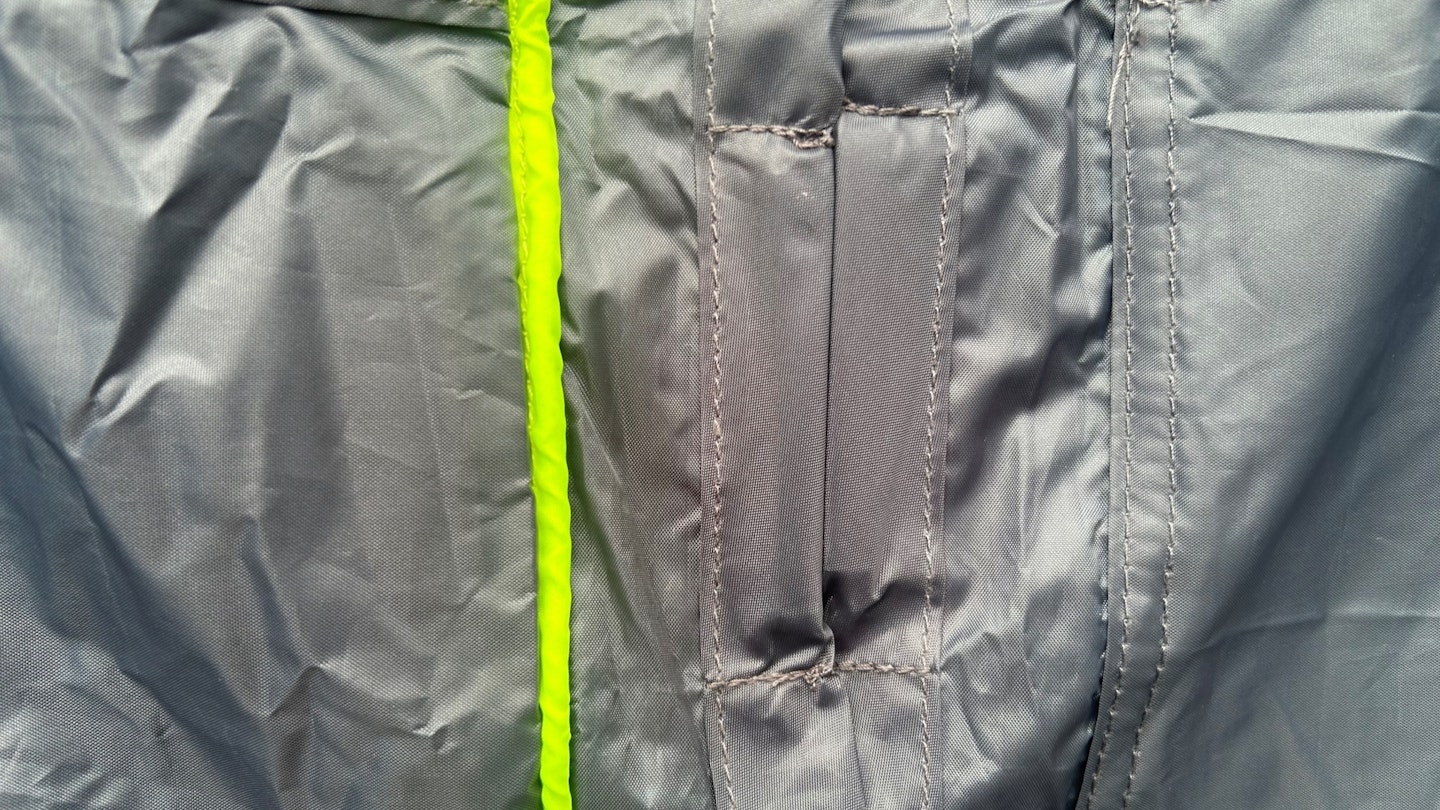
Hydrostatic head isn’t everything, though, and the Colorado 5 Air’s fabric seams are fully taped to reinforce this potential area of weakness. A PFC-free durable water repellent coating (DWR) completes the picture, providing that invisible shield around the fabric that makes water bead on the surface.
On test, I found that the tent batted away the elements with relative ease, though I was fortunate enough not to suffer a sustained deluge while camping in it. Only time will tell how it fares in the long run, though I’d wager that, based on its stats and design, the Colorado 5 Air will hold its own.
Condensation
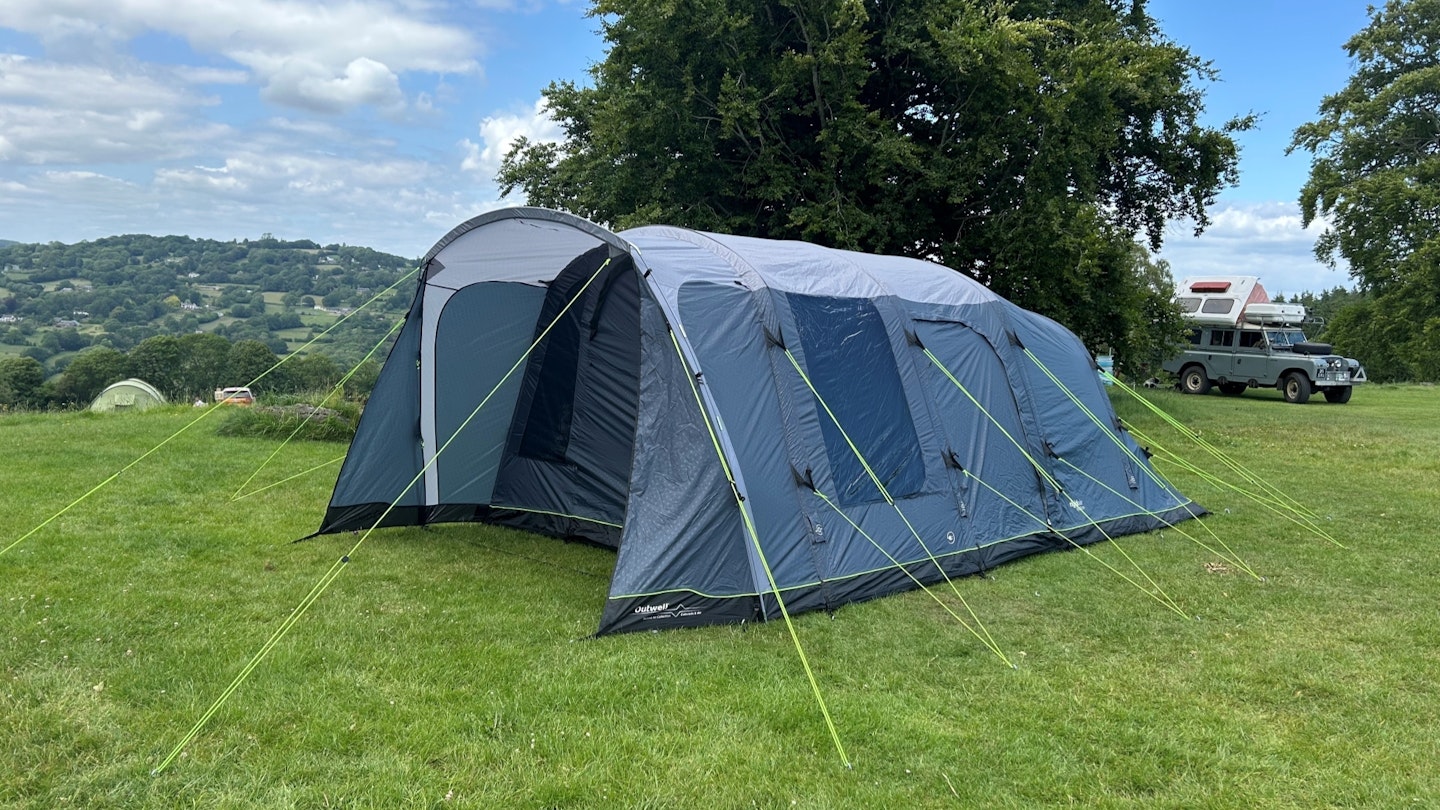
Condensation tends to be less of an issue in large family tents than it does in something like a one-person backpacking tent. Nevertheless, the design of the tent’s vents is still crucial to avoiding condensation build up and achieving a good night’s sleep.
Airflow can be tailored thanks to Outwell’s Rear Ventilation System – openings located behind the bedrooms. I was able to adjust this depending on how much ventilation I desired, opening it up fully on warmer nights.
The main doors feature twin layers, one the same hard-wearing polyester as the flysheet for rainy nights and the other a mesh for when I wanted to let air in but keep the mozzies out. Similarly, the bedroom doors also feature mesh panels for enhanced airflow.
Wind protection
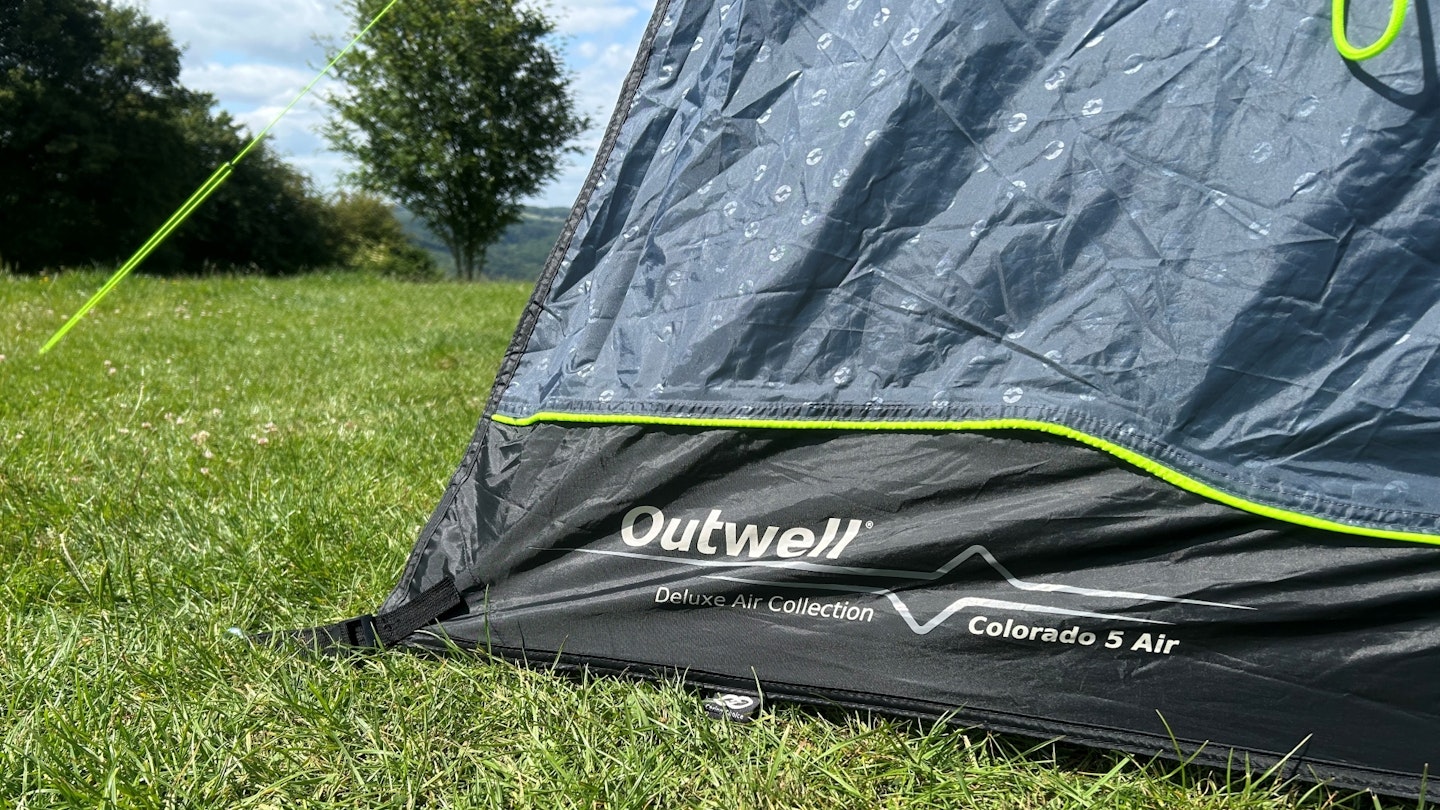
The Colorado 5 Air boasts both an aerodynamic shape and a hardy squad of guylines to keep everything grounded in high winds. Supportive webbing, Outwell’s Wind Brace System, along the air beams provides additional stability.
It’s been tested to withstand wind strength nine on the Beaufort scale, equivalent to speeds of 75-88km/h (46-55mph). While I didn’t experience gusts of this severity during the test period, I did sleep out in relatively windy conditions and the tent always felt reassuringly stable. The bright, reflective guylines are beautifully designed with easy to adjust fasteners emblazoned with the brand’s logo.
It's worth noting that Outwell states that it’s important not to over tension the guy lines to the point where the beams are pulled out of their shape, as this has a negative impact on performance in windy conditions.
Weight and packed size
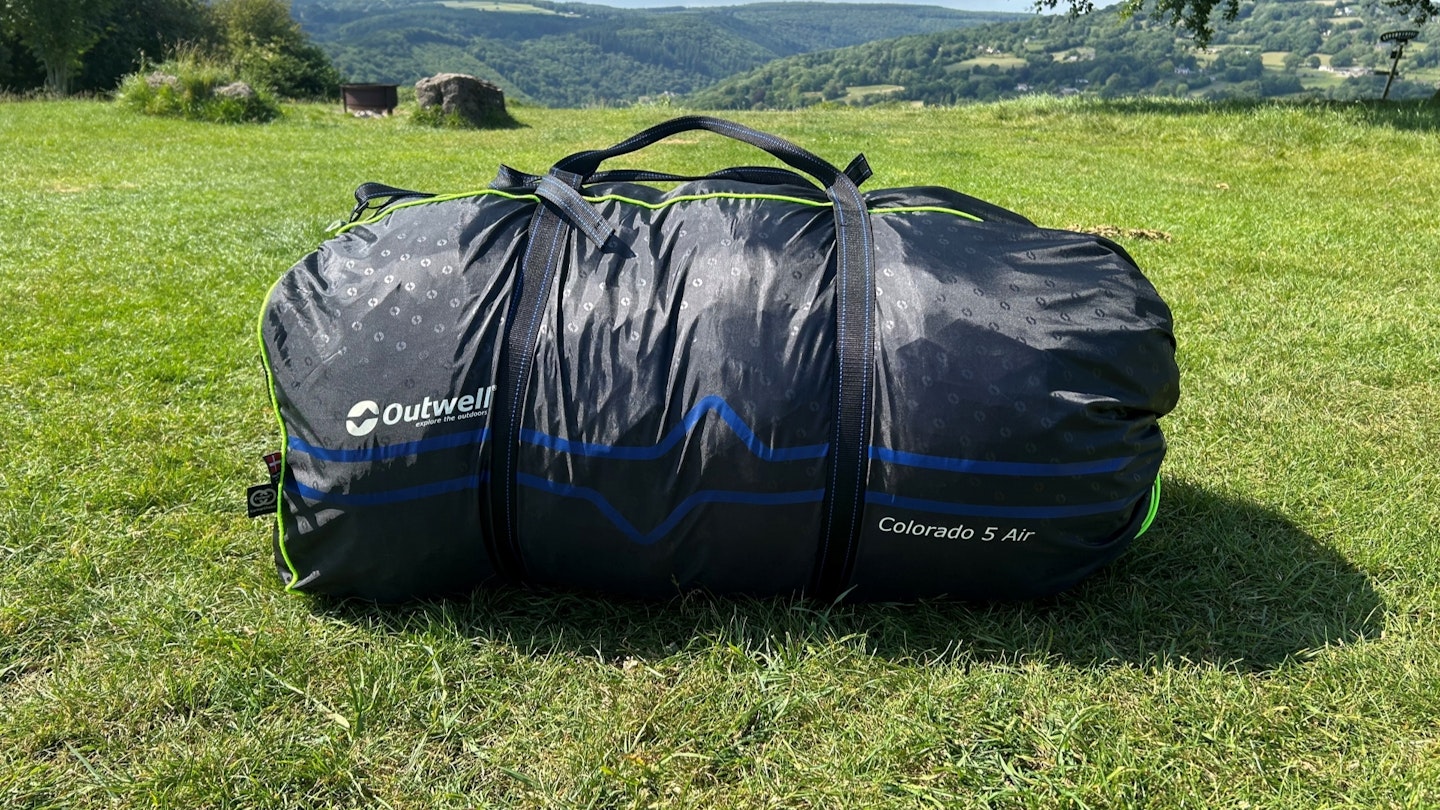
The Colorado 5 Air weighs in at 26.6kg and, unless you’re auditioning for World’s Strongest Man/Woman, requires a two-person lift to transport it any considerable distance. However, as long as you can park your car by your pitch, it can easily be dragged into position – it’s a shame the stuff sack doesn’t have a handle at one end for this very purpose.
The heft of the pegs used on this tent is notable – they’re bigger and heavier than much of the competition. I’d assert that Outwell have clearly prioritised robust quality over any attempt to keep the overall weight down.
A relatively palatial air tent is always going to have a large packed size and the Colorado 5 Air is no exception, measuring 78 x 40 x 45cm. As a packed up unit, it’s noticeably larger and heavier than some other family air tents, but there's not a lot in it. In short, it’s more hassle to lug around than some – better for longer camping trips than spontaneous sojourns.
Features

For a little extra light at night, lanterns can be attached via the Hooktrack System. This is a track along the ceiling of the living room that allows you to place a hook for attaching accessories. It’s a shame there isn’t similar in the bedroom for reading into the early hours.
The porch features side panels that can be retracted when you want to enjoy the views or put in place for additional shelter from the wind.
The little details matter – Outwell has excelled in some places, while in others it perhaps could have done better. Features like the Velcro-style guyline retainers are very welcome, helping to keep guylines neat and tidy when packing away. The tie backs all feature adjustable toggles as well, which keeps everything nice and tidy.

However, I had misgivings with the peg and pole bags. Rather than a Velcro-style closure or a drawcord with a stopper, instead there’s just an open drawcord. This means when closing I had to tie a knot to keep the contents secure inside.
It’s by no means the end of the world, but this is a bit of a faff both when pitching and packing away, especially when you consider there are loads of more convenient designs doing the rounds. As mentioned, the tubular stuff sack’s top opening isn’t ideal either for quick, fuss-free packing away.
Verdict
There’s lots to love about the Outwell Colorado 5 Air, particularly when it comes to its ease of pitching, its liveability and the occasional clever touch, like the silent, magnetic bedroom opening.
It takes a little longer to pitch than some and getting it folded away into its stuff sack can be a bit of an ordeal. However, for longer family camping trips, this premium tent is a great shout.
Want something a little more compact for your basecamp? Take a look at our list of the best three-person tents.
Shop this product
About the author

As a qualified Mountain Leader, avid wild camper and a family man, Alex Foxfield enjoys camping in all its forms. An expert on all things outdoor gear, he’s been testing and reviewing camping kit and tents – from solo backpacking shelters to palatial family car camping tents – for many years.





